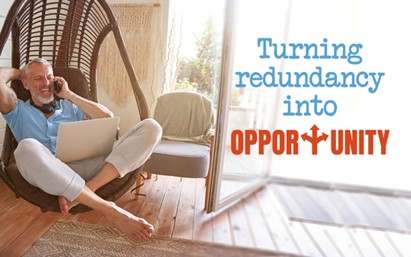In these unprecedented times, we have seen an unprecedented response by both Commonwealth and State governments in efforts to keep the economy moving along, as well as keeping people livelihoods intact.

The relief includes payments to businesses and individuals, with small business a priority. This focus on small business is key to keeping confidence up for after the tragic health of COVID-19 fades away and we need to re-start the economy.
Outlined below is what relief is on offer, who can receive it and when. The majority of this is sourced from the Australian treasury website.
Relief for Individuals
Welfare recipients
The government has substantially increased welfare payments for at least six months for most people in the Centrelink system, which is good news for those who have already lost their jobs because of the virus crisis.
Existing and new recipients of JobSeeker (formerly Newstart) payment, Youth Allowance job seeker, Parenting Payment, Farm Household Allowance and Special Benefit will receive an additional $550 a fortnight for the next six months.
While it’s labelled as a new coronavirus supplement payment, it is effectively a doubling of the existing Newstart rate.
Over 6.5 million Australians on the age pension, Newstart/JobSeeker, Youth Allowance, Austudy, Family Tax Benefit, or receiving disability support or parenting and carer payments also received a one-off cash payment of $750 on March 31.
They will receive a second $750 payment from July 13. The cost of these payments is $4.8 billion.
Pensioners
The $750 cash payments are good news for pensioners – about half of the total payments made will go their way.
Lower and upper deeming rates were also cut by half a percentage point – this policy is largely targeted at pensioners on March 12, which was quickly followed by a further 0.25 percentage point decrease.
This will also largely benefit pensioners, who will account for about 565,000 of the 900,000 welfare recipients it affects. The government expects pensioners will receive about $324 more of the Age Pension for the first full year the policy applies.
The government has temporarily reduced superannuation minimum drawdown requirements for account-based pensions by 50 per cent for the next two financial years.
It hopes this will help retirees by reducing the need to sell investments to fund minimum drawdown requirements.
The total cost of these policies is expected to be $876 million.
Superannuation access
Workers who lose their job or more than 20 per cent of their work because of the virus will be able to withdraw up to $20,000 from their superannuation.
That’s split across two years – $10,000 this financial year, and the remainder next financial year.
Payments are tax Complimentary and will not affect welfare payments. They’re expected to cost about $1.2 billion total.
Childcare
The government’s bailout of the childcare sector, outlined above, means that families will not be charged for care for the duration of the crisis.
While the money is paid directly to childcare centres, it’s still a cost-saving measure for parents and guardians.
Relief for Business
Salary support – JobKeeper payments
Part of the challenge is to keep businesses afloat and keep employment as low as possible. To do this the government incentivised businesses when it announced it will subsidise wages for workers at businesses hit hard by coronavirus.
It will pay $1500 a fortnight – which is about 70 per cent of the median Australian wage – to businesses per eligible employee, which will then be passed on through their existing payroll system.
The government is anticipating this will help about 6 million workers over the next six months.
If the employee usually makes more than that amount, then the employer is expected to make up the gap. If the worker has been stood down, however, they only need to pass on the $1500.
Casuals and part-time workers will get the full $1,500 regardless of whether they usually earn less than that.
All workers, whether full-time, part-time, casual or self-employed, can get the money, though casuals need to have been with the business for at least 12 months.
To qualify, businesses must have lost 30 per cent of their turnover, or 50 per cent if they usually bring in more than $1 billion annually, in a month-long period compared with last year.
New Zealanders can also access the money, but workers on temporary visas from elsewhere in the world cannot.
Importantly, employers won’t start receiving payments until May, but they will be backdated to March.
Eligible businesses hiring apprentices or trainees were already able to get support paying salaries under the first round of stimulus measures announced by the government.
They are able to get wage subsidies worth 50 per cent of apprentices’ and trainees’ salaries paid from January 1, this year, to September 30, up to $21,000 per employee.
Small businesses – loans
Under the newly created Coronavirus SME Guarantee Scheme, the government will guarantee 50 per cent of new unsecured loans issued by eligible lenders to help support $40 billion in financing to small and medium-sized businesses.
The maximum total size of loans is capped at $250,000 per borrower.
The loans will be for up to three years, with an initial six-month repayment holiday.
Small businesses – cash flow boost
The government will provide tax-Complimentary cash flow boosts of $20,000 to $100,000 for businesses with turnover under $50 million who employ staff, and non-profits.
The payments will be delivered through credits when businesses lodge their activity statements.
They won’t need to apply for the payments – their accounts will be credited with 50 per cent of their business or instalment activity statements from April 28.
The measure will cost $31.9 billion and end on June 30, 2020.
The government expects almost 700,000 businesses to qualify.
Small businesses – spending incentives
The instant asset write-off threshold for businesses which turn over up to $500 million was increased to $150,000 until the end of this financial year.
Businesses will also be able to get a 50 per cent deduction on eligible assets until the end of the 2021 financial year.
Small businesses – tax relief
The ATO is deferring certain tax obligations for businesses affected by the virus for up to six months.
This is on a case-by-case basis, but the ATO is ready to help small businesses work out if they qualify – it has already set up a temporary shopfront in Cairns, where the decimation of the tourism industry has hit particularly hard, and is considering doing the same in outer hard-hit areas.
It is also allowing businesses to vary pay-as-you-go instalment amounts to zero for the March quarter.
Businesses can also claim a refund for any instalments paid for the September and December 2019 quarters.
Help for virus-hit sectors
Childcare
The government has set aside $1 billion to support regions and industries that are disproportionately hit by the virus, to be paid through existing schemes. The tourism, education and agriculture industries, and the communities that are reliant on them, have been flagged as possible focus areas.
The childcare sector is also receiving help from the federal government, through assistance with salary payments as outlined above and by the government paying fees on behalf of customers.
The package followed thousands of parents pulling their kids out of centres because they had lost their jobs or feared infection.
Under the plan, the government will calculate what a centre’s revenue based on enrolments was in the fortnight to March 2 – before children started being withdrawn in significant numbers – and pay 50 per cent of that directly to the centre, on the proviso services remain open and families are not charged for care.
Access to superannuation for international students
International students who have been in Australia for longer than 12 months and who find themselves in financial hardship during the coronavirus crisis will be able to access their Australian superannuation.
New visa arrangements for seasonal workers
The Australian Government announced temporary changes to visa arrangements that would allow Pacific workers under the Seasonal Worker Programme and the Pacific Labour Scheme to continue working in the agriculture sector until the coronavirus crisis has passed.
The new visas will enable the workers to remain in Australia and continue working to support themselves for up to 12 months. The conditions under the visas will be carried over to the new visa arrangements, continuing the sponsorship arrangements between Pacific workers and their employers.
These changes will ensure the agricultural sector has the labour force it needs during the COVID-19 pandemic.
Relief or Queenslanders

The facility will be worth up to $500 million.
It is also offering payroll tax relief for businesses who pay under $6.5 million in taxable wages.
Businesses that are bigger than that revenue can still get a refund on their payroll tax for the past two months and defer their payments for the rest of the year.
To find out if your business is eligible for any of the assistance on offer try using the calculator on their website.
For individuals, the Sunshine State is providing households with $200 off their utility bills.
Taking control of your financial situation is more important now than ever! Book a time to chat to the Centaur Financial team about how you can plan not just for today but beyond.





































































